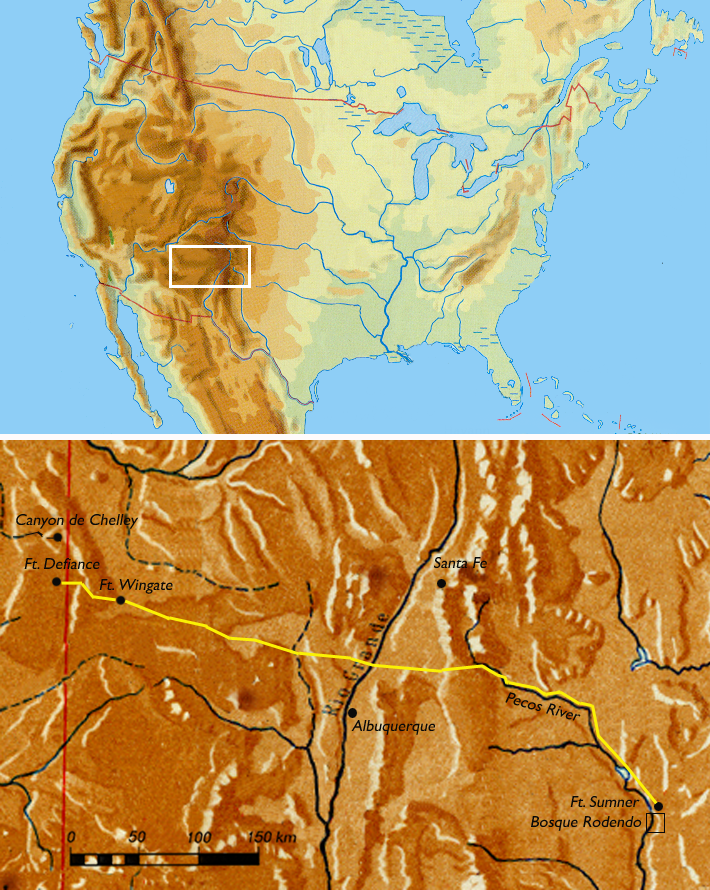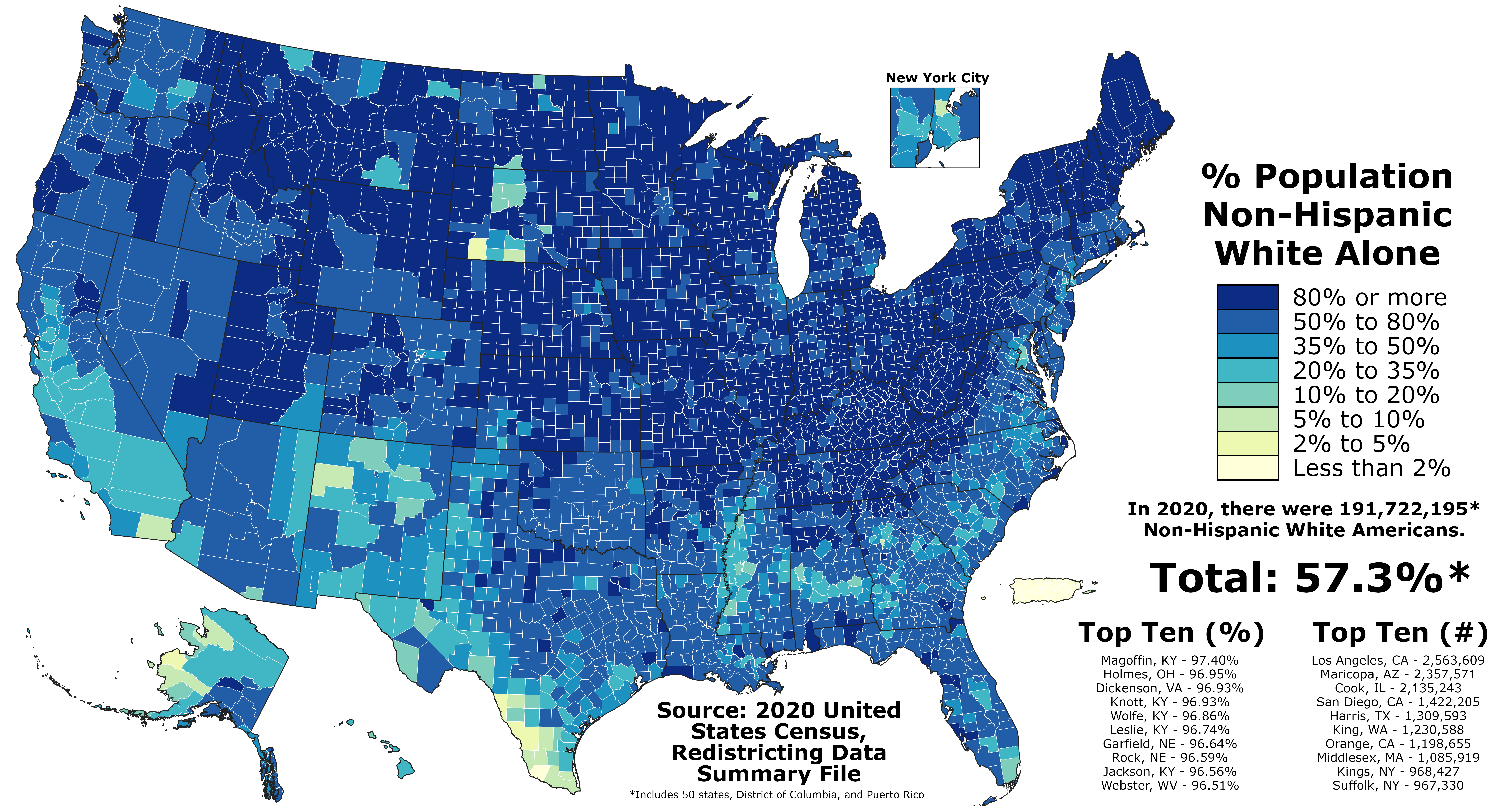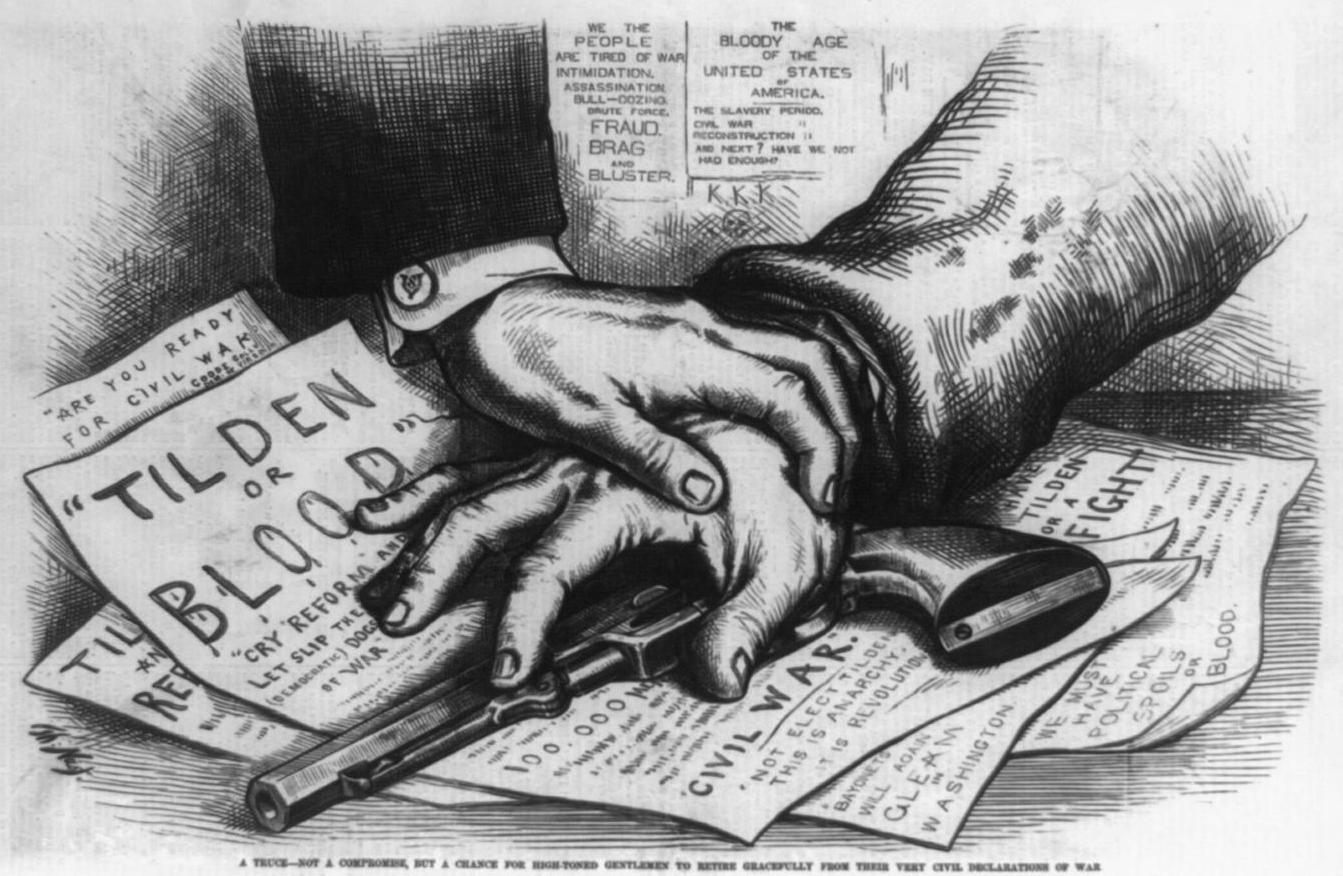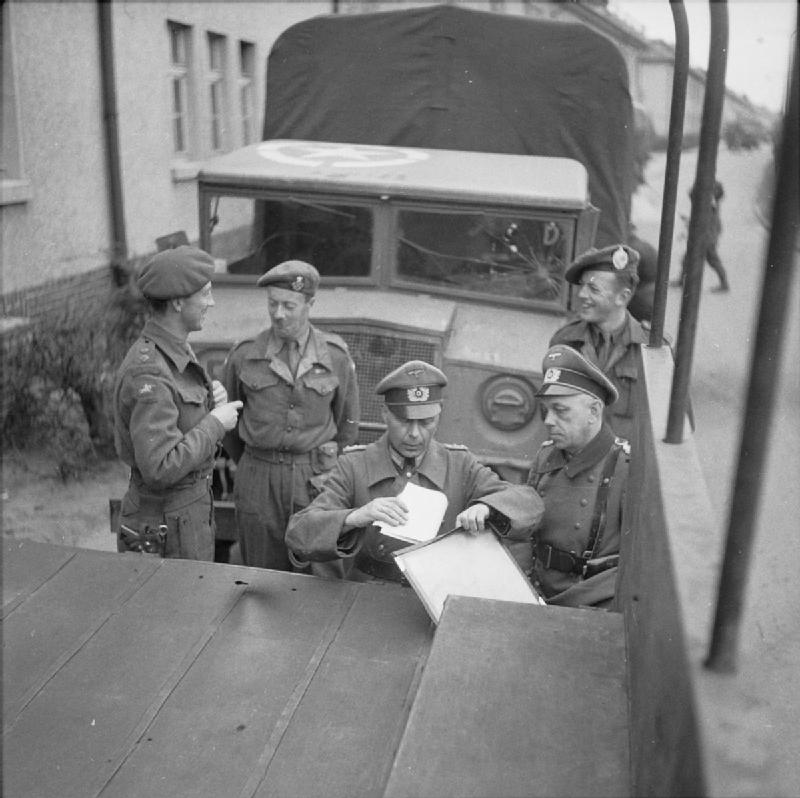|
Long Walk Of The Navajo
The Long Walk of the Navajo, also called the Long Walk to Bosque Redondo ( nv, Hwéeldi), was the 1864 deportation and attempted ethnic cleansing of the Navajo people by the United States federal government. Navajos were forced to walk from their land in what is now Arizona to eastern New Mexico. Some 53 different forced marches occurred between August 1864 and the end of 1866. Some anthropologists claim that the "collective trauma of the Long Walk...is critical to contemporary Navajos' sense of identity as a people". Introduction The traditional Navajo homeland spans from Arizona through western New Mexico, where the Navajo had houses, planted crops and raised livestock. There was a long historical pattern in the Southwest of groups or bands raiding and trading with each other, with treaties being made and broken. This included interactions between Navajo, Spanish, Mexican, Pueblos, Apache, Comanche, Ute, and later European Americans. Individual civilians and Native ... [...More Info...] [...Related Items...] OR: [Wikipedia] [Google] [Baidu] |
Navajo Wars
The term Navajo Wars covers at least three distinct periods of conflict in the American West: the Navajo against the Spanish (late 16th century through 1821); the Navajo against the Mexican government (1821 through 1848); and the Navajo against the United States (after the 1847–48 Mexican–American War). These conflicts ranged from small-scale raiding to large expeditions mounted by governments into territory controlled by the Navajo. The Navajo Wars also encompass the widespread raiding that took place throughout the period; the Navajo raided other tribes and nearby settlements, who in return raided into Navajo territory, creating a cycle of raiding that perpetuated the conflict. Spanish period Facundo Melgares, the last Spanish governor of New Mexico before independence in 1821, conducted two unsuccessful expeditions against the Navajo, who were attacking the New Mexican settlers. In October 1821 he sued for peace. Timeline * 1582: Espejo-Beltrain "found here peaceful ... [...More Info...] [...Related Items...] OR: [Wikipedia] [Google] [Baidu] |
European Americans
European Americans (also referred to as Euro-Americans) are Americans of European ancestry. This term includes people who are descended from the first European settlers in the United States as well as people who are descended from more recent European arrivals. European Americans have been the largest panethnic group in the United States since about the 17th century. The Spaniards are thought to be the first Europeans to establish a continuous presence in what is now the contiguous United States, with Martín de Argüelles ( 1566) in St. Augustine, then a part of Spanish Florida, and the Russians were the first Europeans to settle in Alaska, establishing Russian America. The first English child born in the Americas was Virginia Dare, born August 18, 1587. She was born in Roanoke Colony, located in present-day North Carolina, which was the first attempt, made by Queen Elizabeth I, to establish a permanent English settlement in North America. In the 2016 American Community ... [...More Info...] [...Related Items...] OR: [Wikipedia] [Google] [Baidu] |
Manuelito
Chief Manuelito or Hastiin Chʼil Haajiní ("Sir Black Reeds", "Man of the Black Plants Place") (1818–1893) was one of the principal headmen of the Diné people before, during and after the Long Walk Period. ''Manuelito'' is the diminutive form of the name '' Manuel'', the Iberian variant of the name Immanuel; ''Manuelito'' roughly translates to ''Little Immanuel''. He was born to the ''Bit'ahnii'' or ″Folded Arms People Clan″, near the Bears Ears in southeastern Utah about 1818. As many Navajo, he was known by different names depending upon context. He was ("Holy Boy"), ("Son-in-Law of Late Texan"), ''Hastiin Ch'ilhaajinii'' ("Man of the Black Plants Place") and as (War Chief, "Warrior Grabbed Enemy") to other Diné, and non-Navajo nicknamed him "Bullet Hole". Manuelito was a prominent Navajo leader who rallied his nation against the oppression of the United States military. For several years he led a group of warriors in resisting federal efforts to forcibly remove ... [...More Info...] [...Related Items...] OR: [Wikipedia] [Google] [Baidu] |
Treaty Clause
The Treaty Clause of the United States Constitution (Article II, Section 2, Clause 2) establishes the procedure for ratifying international agreements. It empowers the President as the primary negotiator of agreements between the United States and other countries, and holds that the advice and consent of a two-thirds supermajority of the Senate renders a treaty binding with the force of federal law. Text Background Treaties under the Articles of Confederation As with the drafting of the U.S. Constitution as a whole, the Treaty Clause was influenced by perceived flaws and limitations of the Articles of Confederation, the first governmental framework of the United States. The Articles established a weak central government and accorded significant autonomy and deference to the individual states. The unicameral Congress of the Confederation was the sole national governing body, with both legislative and executive functions, including the power to make treaties. However, to t ... [...More Info...] [...Related Items...] OR: [Wikipedia] [Google] [Baidu] |
Treaty
A treaty is a formal, legally binding written agreement between actors in international law. It is usually made by and between sovereign states, but can include international organizations An international organization or international organisation (see spelling differences), also known as an intergovernmental organization or an international institution, is a stable set of norms and rules meant to govern the behavior of states a ..., individuals, business entities, and other legal persons. A treaty may also be known as an international agreement, protocol, covenant, convention, pact, or exchange of letters, among other terms. However, only documents that are legally binding on the parties are considered treaties under international law. Treaties vary on the basis of obligations (the extent to which states are bound to the rules), precision (the extent to which the rules are unambiguous), and delegation (the extent to which third parties have authority to interpret, apply ... [...More Info...] [...Related Items...] OR: [Wikipedia] [Google] [Baidu] |
Armistice
An armistice is a formal agreement of warring parties to stop fighting. It is not necessarily the end of a war, as it may constitute only a cessation of hostilities while an attempt is made to negotiate a lasting peace. It is derived from the Latin ''arma'', meaning "arms" (as in weapons) and ''-stitium'', meaning "a stopping". The United Nations Security Council often imposes, or tries to impose, cease-fire resolutions on parties in modern conflicts. Armistices are always negotiated between the parties themselves and are thus generally seen as more binding than non-mandatory UN cease-fire resolutions in modern international law. An armistice is a '' modus vivendi'' and is not the same as a peace treaty, which may take months or even years to agree on. The 1953 Korean War Armistice Agreement is a major example of an armistice which has not been followed by a peace treaty. An armistice is also different from a truce or ceasefire, which refer to a temporary cessation of hostiliti ... [...More Info...] [...Related Items...] OR: [Wikipedia] [Google] [Baidu] |
Ceasefire
A ceasefire (also known as a truce or armistice), also spelled cease fire (the antonym of 'open fire'), is a temporary stoppage of a war in which each side agrees with the other to suspend aggressive actions. Ceasefires may be between state actors or involve non-state actors. Ceasefires may be declared as part of a formal treaty, but also as part of an informal understanding between opposing forces. They may occur via mediation or otherwise as part of a peace process or be imposed by United Nations Security Council resolutions via Chapter VII of the United Nations Charter. The immediate goal of a ceasefire is to stop violence, but the underlying purposes of ceasefires vary. Ceasefires may be intended to meet short-term limited needs (such as providing humanitarian aid), manage a conflict to make it less devastating, or advance efforts to peacefully resolve a dispute. An actor may not always intend for a ceasefire to advance the peaceful resolution of a conflict, but instead gi ... [...More Info...] [...Related Items...] OR: [Wikipedia] [Google] [Baidu] |
Ceasefire
A ceasefire (also known as a truce or armistice), also spelled cease fire (the antonym of 'open fire'), is a temporary stoppage of a war in which each side agrees with the other to suspend aggressive actions. Ceasefires may be between state actors or involve non-state actors. Ceasefires may be declared as part of a formal treaty, but also as part of an informal understanding between opposing forces. They may occur via mediation or otherwise as part of a peace process or be imposed by United Nations Security Council resolutions via Chapter VII of the United Nations Charter. The immediate goal of a ceasefire is to stop violence, but the underlying purposes of ceasefires vary. Ceasefires may be intended to meet short-term limited needs (such as providing humanitarian aid), manage a conflict to make it less devastating, or advance efforts to peacefully resolve a dispute. An actor may not always intend for a ceasefire to advance the peaceful resolution of a conflict, but instead gi ... [...More Info...] [...Related Items...] OR: [Wikipedia] [Google] [Baidu] |
Gallup, New Mexico
Zuni: ''Kalabwaki'' , settlement_type = City , nickname = "Indian Capital of the World" , motto = , image_skyline = Gallup, New Mexico.jpg , imagesize = 250px , image_caption = Motels and businesses in Gallup , image_flag = Flag of Gallup, New Mexico.svg , image_seal = , image_map = McKinley_County_New_Mexico_Incorporated_and_Unincorporated_areas_Gallup_Highlighted.svg , mapsize = 250px , map_caption = Location of Gallup in New Mexico , image_map1 = , mapsize1 = , map_caption1 = , pushpin_map = USA , pushpin_map_caption = Location in the United States , subdivision_type = Country , subdivision_type1 = State , subdivision_type2 = County , subdivision_name = United States , subdivision_name1 = New Mexico , subdivision_name2 = McKinley , governmen ... [...More Info...] [...Related Items...] OR: [Wikipedia] [Google] [Baidu] |
Fort Fauntleroy
Fort Wingate was a military installation near Gallup, New Mexico. There were two other locations in New Mexico called Fort Wingate: Seboyeta, New Mexico (1849–1862) and San Rafael, New Mexico (1862–1868). The most recent Fort Wingate (1868–1993) was established at the former site of Fort Lyon, on Navajo territory, initially to control and "protect" the large Navajo tribe to its north. The Fort at San Rafael was the staging point for the Navajo deportation known as the Long Walk of the Navajo. From 1870 onward the garrison near Gallup was concerned with Apaches to the south, and through 1890 hundreds of Navajo Scouts were enlisted at the fort. Fort Wingate supplied 100 tons of Composition B high explosives to the Manhattan Project for use in the first Trinity test and became an ammunition depot "Fort Wingate Depot Activity" from World War II until it was closed by the 1993 Base Realignment and Closure Commission. Environmental cleanup of UXO, perchlorate, and lead as ... [...More Info...] [...Related Items...] OR: [Wikipedia] [Google] [Baidu] |
Fort Wingate
Fort Wingate was a military installation near Gallup, New Mexico. There were two other locations in New Mexico called Fort Wingate: Seboyeta, New Mexico (1849–1862) and San Rafael, New Mexico (1862–1868). The most recent Fort Wingate (1868–1993) was established at the former site of Fort Lyon, on Navajo territory, initially to control and "protect" the large Navajo tribe to its north. The Fort at San Rafael was the staging point for the Navajo deportation known as the Long Walk of the Navajo. From 1870 onward the garrison near Gallup was concerned with Apaches to the south, and through 1890 hundreds of Navajo Scouts were enlisted at the fort. Fort Wingate supplied 100 tons of Composition B high explosives to the Manhattan Project for use in the first Trinity test and became an ammunition depot "Fort Wingate Depot Activity" from World War II until it was closed by the 1993 Base Realignment and Closure Commission. Environmental cleanup of UXO, perchlorate, and lead as we ... [...More Info...] [...Related Items...] OR: [Wikipedia] [Google] [Baidu] |
Window Rock, Arizona
Window Rock ( nv, , ) is a census-designated place that serves as the seat of government and capital of the Navajo Nation, the largest territory in North America of a sovereign Native American nation. The capital lies within the boundaries of the St. Michaels Chapter, adjacent to the Arizona and New Mexico state line. Window Rock is the site of the Navajo Nation governmental campus, which contains the Navajo Nation Council, Navajo Nation Supreme Court, the offices of the Navajo Nation President and Vice President, and many Navajo government buildings. Window Rock's population was 2,712 at the 2010 census. It is estimated to reach around 20,000 during weekdays when tribal offices are open. Window Rock's main natural attraction is the window formation of sandstone which the community is named after. The Navajo Nation Museum, the Navajo Nation Zoological and Botanical Park, and the Navajo Nation Code Talkers World War II memorial are tribal attractions located in Window Rock. O ... [...More Info...] [...Related Items...] OR: [Wikipedia] [Google] [Baidu] |




.jpg)




